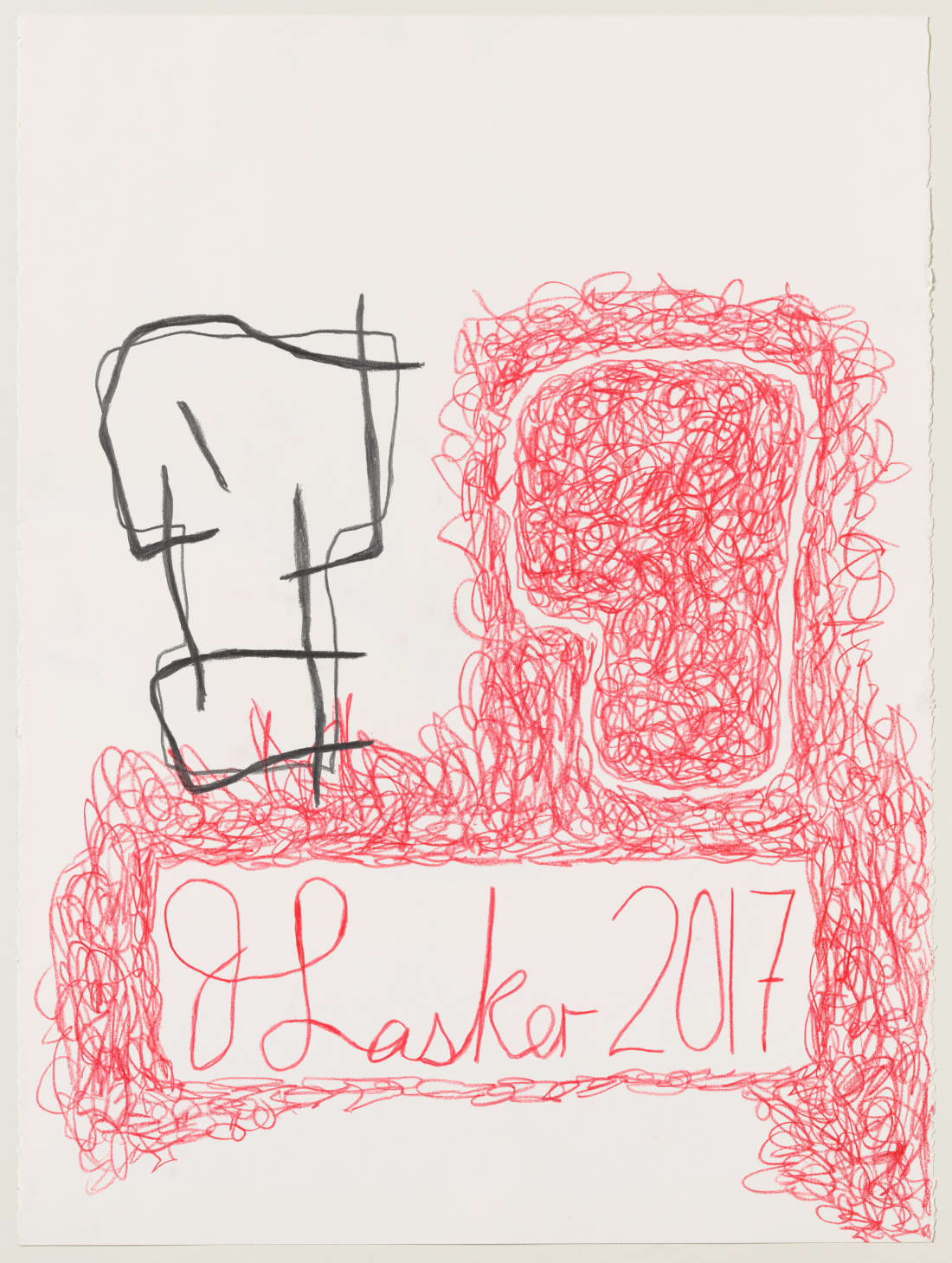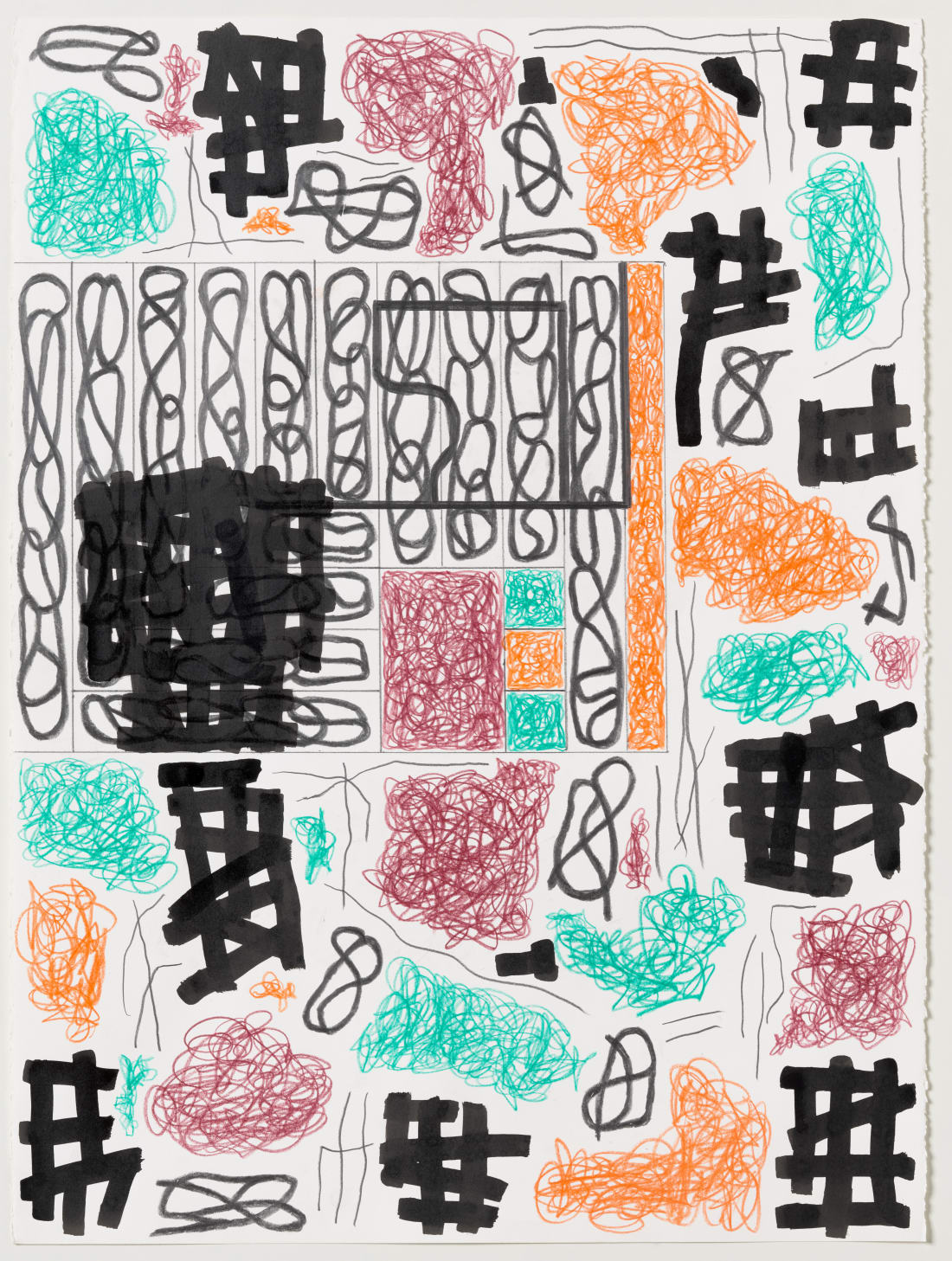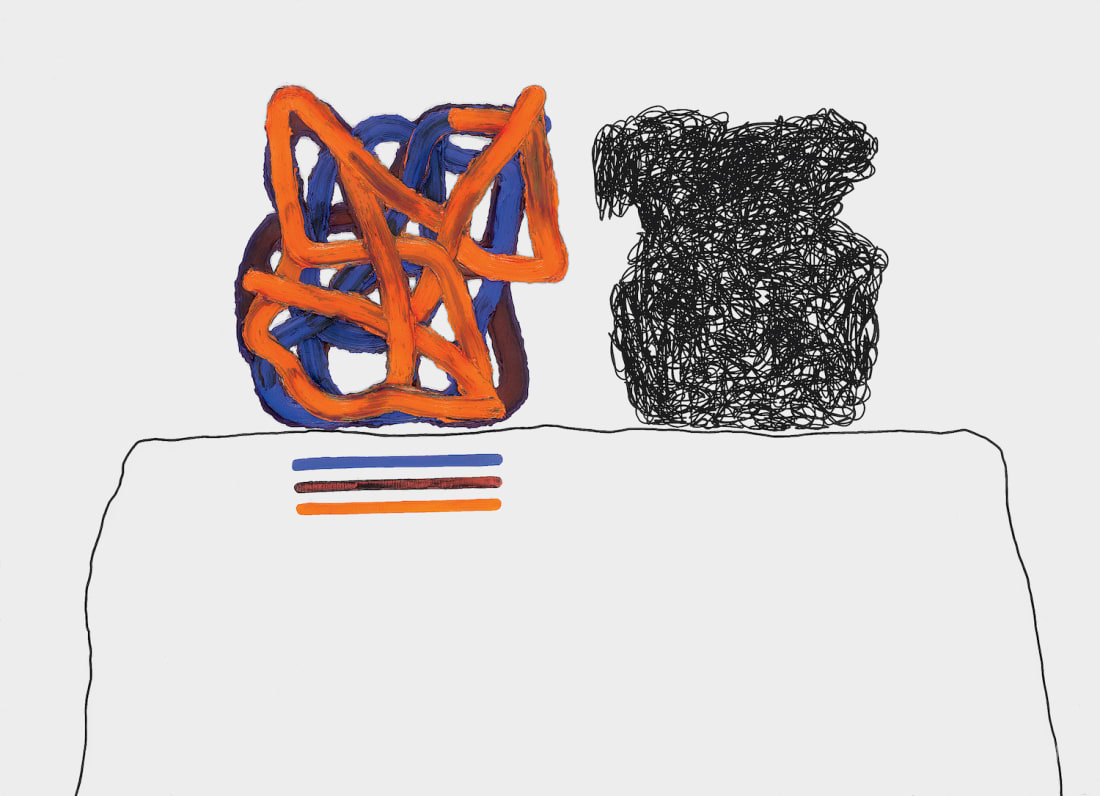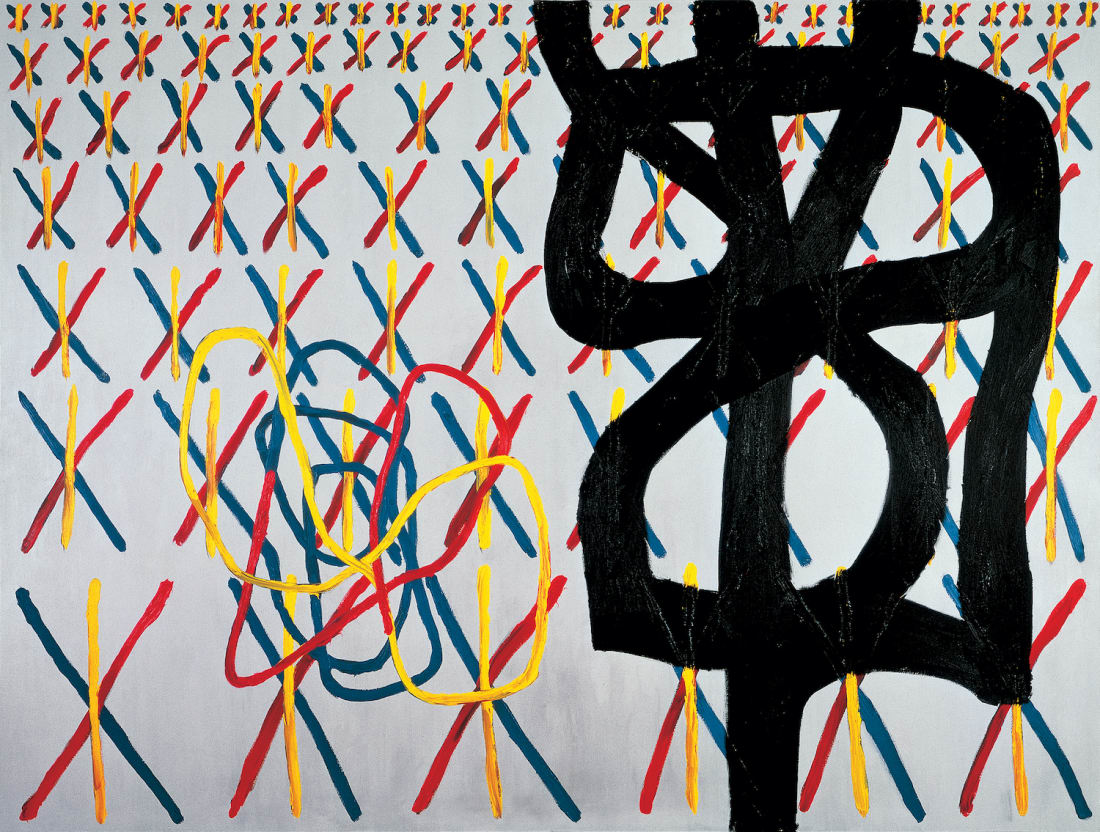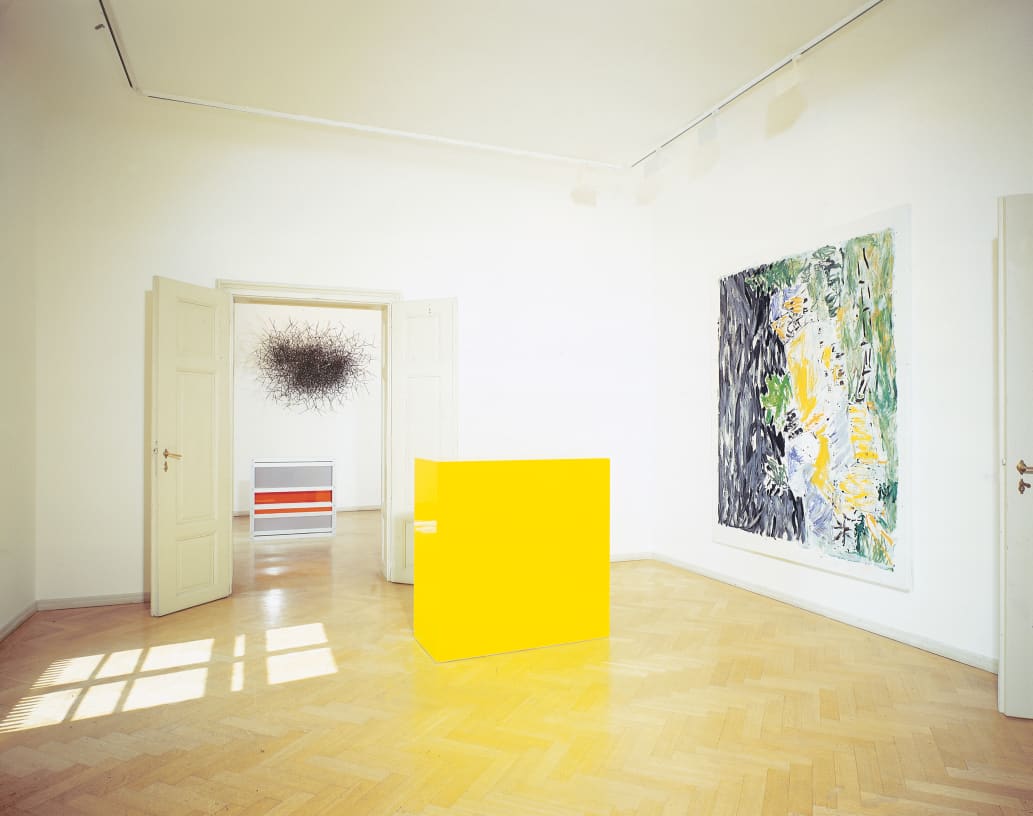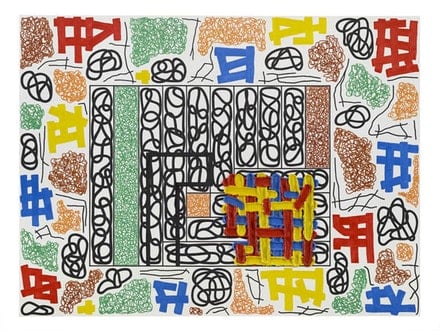

Jonathan Lasker
Overview
'In my works the three visual elements of figure, ground and line work a little like a jazz trio in the way they achieve visual counterpoint.'
Since the late 1970s, Jonathan Lasker has developed a distinctive formal vocabulary based on different mark-making processes, including structural grids, graphic scribbled lines and thick impasto strokes of paint. Although he creates these forms intuitively, the compositions themselves are highly structured and controlled. At the forefront of artists who re-established the possibilities of painting after Minimalism and Conceptualism emptied the picture-plane, he has mounted a challenge to the medium's status quo, creating a unique system of painting based on a figure-ground relationship, in which the figure and ground stand in a dialectical relationship to one another.
The artist uses doubled, transposed and translated forms to create paintings composed of distinct, clearly defined elements. 'In Lasker's work, forms […] are part of a larger schema, but independent in terms of form, colour, texture, and manner of paint application,' describes art critic Richard Kalina. 'Each image [in the picture] becomes a thing itself, an element to be examined, experienced and categorised; a component of the larger grammatical structure that Lasker has built.' The pictures which form are arrived at by the viewer interpretively rather than literally, through an active engagement with the different abstract figures on the canvas and the relationships between them. Viewers are encouraged to experience themselves through the act of viewing and, in the end, they become the subject of Lasker's paintings.
Since the late 1970s, Jonathan Lasker has developed a distinctive formal vocabulary based on different mark-making processes, including structural grids, graphic scribbled lines and thick impasto strokes of paint. Although he creates these forms intuitively, the compositions themselves are highly structured and controlled. At the forefront of artists who re-established the possibilities of painting after Minimalism and Conceptualism emptied the picture-plane, he has mounted a challenge to the medium's status quo, creating a unique system of painting based on a figure-ground relationship, in which the figure and ground stand in a dialectical relationship to one another.
The artist uses doubled, transposed and translated forms to create paintings composed of distinct, clearly defined elements. 'In Lasker's work, forms […] are part of a larger schema, but independent in terms of form, colour, texture, and manner of paint application,' describes art critic Richard Kalina. 'Each image [in the picture] becomes a thing itself, an element to be examined, experienced and categorised; a component of the larger grammatical structure that Lasker has built.' The pictures which form are arrived at by the viewer interpretively rather than literally, through an active engagement with the different abstract figures on the canvas and the relationships between them. Viewers are encouraged to experience themselves through the act of viewing and, in the end, they become the subject of Lasker's paintings.
Born in Jersey City, New Jersey in 1948, Lasker lives and works in New York. He initially pursued a career as a rock musician before studying at the School of Visual Arts in New York and the California Institute of the Arts in Valencia. Early solo exhibitions include the ICA Philadelphia in 1992 and a retrospective that travelled to the Kunsthalle Bielefeld, Germany; Stedelijk Museum, Amsterdam; and Kunstverein St. Gallen, Switzerland in 1997–98, followed by exhibitions at the Rose Art Museum, Brandeis University, Waltham, USA; Forum for Contemporary Art, St. Louis, USA; and The Power Plant, Toronto. A major retrospective of his work was held in 2003 at the Museo Nacional Centro de Arte Reina Sofía, Madrid and the Kunstsammlung Nordrhein-Westfalen, Düsseldorf. In 2015, the exhibition Jonathan Lasker: Paintings 2001–2014 was shown at the Musée d'art moderne et contemporain in Saint-Étienne, France. In 2024, an exhibition entitled Paintings from Five Decades was organised at MARe, the Museum of Recent Art, in Bucharest.
Videos



Artworks
Exhibitions
Publications






